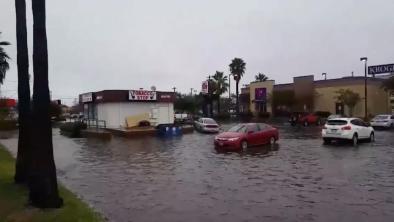Science Source
The future intensification of hourly precipitation extremes
- States that extreme precipitation intensities have increased in all regions of the Contiguous United States (CONUS) and are expected to further increase with warming at scaling rates of about 7% per degree Celsius, suggesting a significant increase of flash flood hazards due to climate change
- States, however, that the scaling rates between extreme precipitation and temperature are strongly dependent on the region, temperature, and moisture availability, which inhibits simple extrapolation of the scaling rate from past climate data into the future
- Studies observed and simulated changes in local precipitation extremes over the CONUS by analyzing a very high resolution (4 km horizontal grid spacing) current and high-end climate scenario that realistically simulates hourly precipitation extremes
- Shows that extreme precipitation is increasing with temperature in moist, energy-limited, environments and decreases abruptly in dry, moisture-limited, environments
- This novel framework explains the large variability in the observed and modeled scaling rates and helps with understanding the significant frequency and intensity increases in future hourly extreme precipitation events and their interaction with larger scales
Related Content
Headline

Dec 5, 2016 | The Weather Channel
Record Rainfall Deluges Galveston, Texas; Homes, Vehicles Flooded
Science Source
| Journal of Climate
Global Water Vapor Trend from 1988 to 2011 and Its Diurnal Asymmetry Based on GPS, Radiosonde, and Microwave Satellite Measurements
Wang, Dai, and Mears
Real Time Data

Jul 28, 2016 | United States Geological Survey
US Daily Flood and High Flow Conditions
Science Source
| Climatic Change
Increased record-breaking precipitation events under global warming
Jascha Lehmann, Dim Coumou, Katja Frieler


